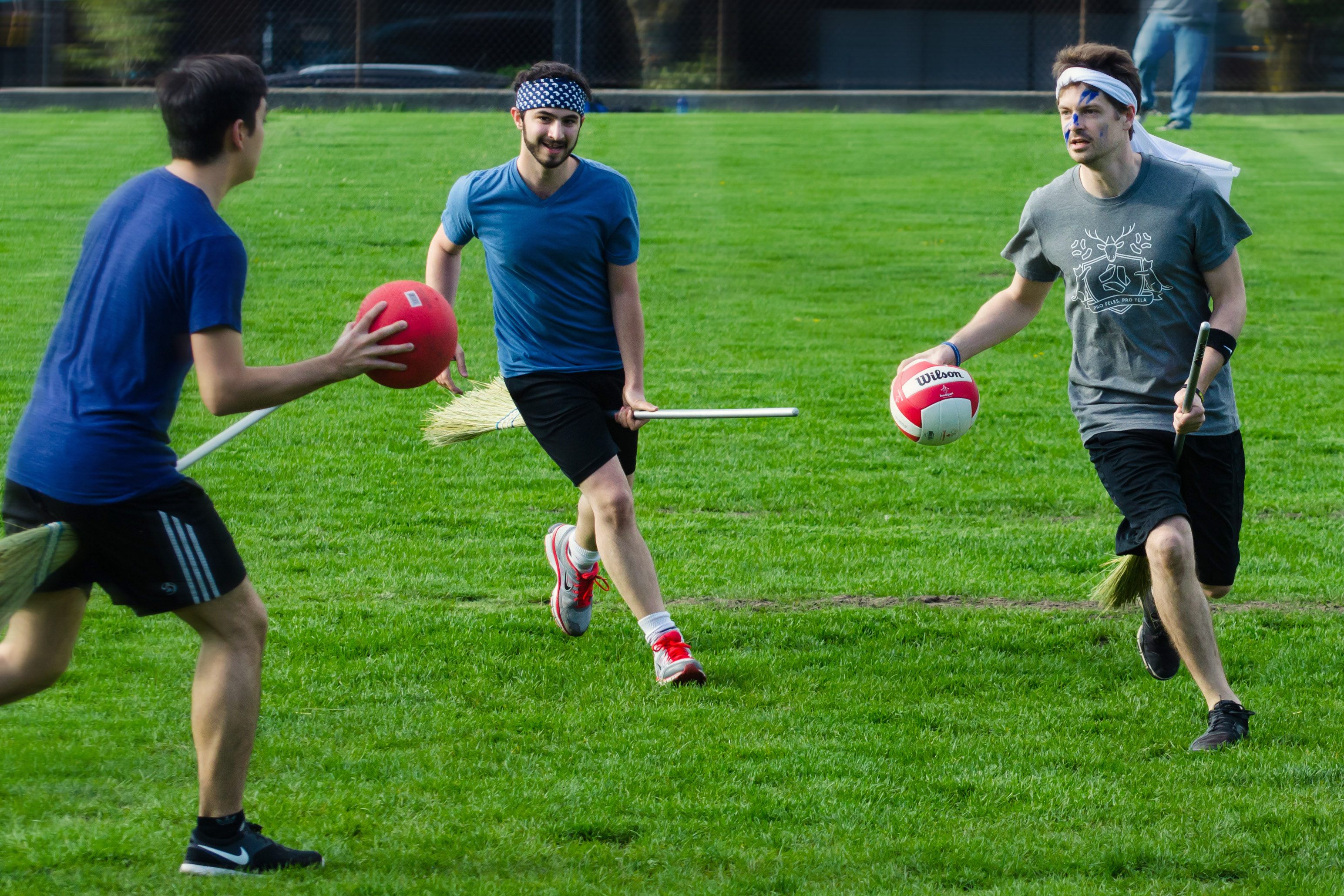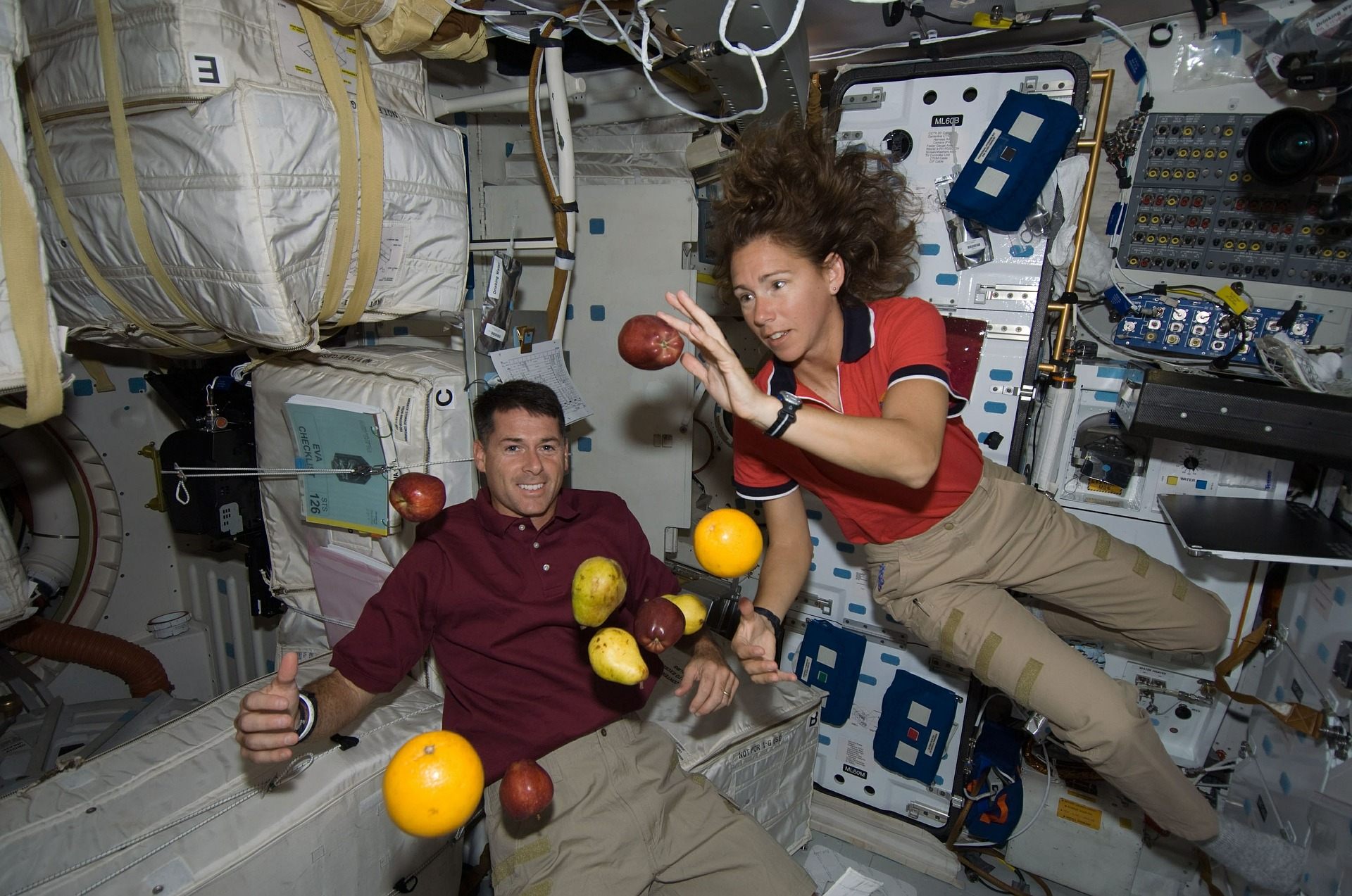The Magic of Quidditch Could be Real if Only We Lived in Space
Scientists imagine what the fictional sport would look like in microgravity.

A beater approaches a chaser with the quaffle during a quidditch match in Vancouver, British Columbia. (Photo: Anton Bielousov/CC BY-SA 3.0)
On fields across the world there are people running around with broomsticks between their legs, throwing volleyballs through hoops, and chasing a person dressed in all yellow. They are playing Quidditch, the fictional wizarding game J.K. Rowling created in the Harry Potter novels.
There are almost 200 college quidditch teams in the United States that set standard rules, have referees and leagues, and host major tournaments, according to the national governing body U.S. Quidditch. It’s a true competitive sport, but with necessary limitations—players are bound to the ground and must rely on imagination to fill in the fantastical elements.
In Rowling’s magical world, Quidditch involves two teams of seven wizards and witches who fly around on brooms shooting a ball called the quaffle through three hoops, knocking players out of the game with enchanted flying balls or bludgers, and zooming after a small humming bird-like ball known as the golden snitch.
Non-magical, Earth-bound humans have a hard time recreating these conditions. But lately, they’ve been trying. Recently, some particularly dedicated fans and daredevils (who would certainly be sorted into the Gryffindor house) dressed up in Quidditch costumes and played the game while skydiving.
“It’s pretty amazing, but dangerous as well,” Albert Globus, a senior research engineer for San Jose State University, remarks on the skydivers’ YouTube video posted in April. Plummeting towards the ground, these skydivers are probably the closest anyone has ever gotten to playing Quidditch like it’s described in Rowling’s books. But Globus believes an even better environment for Quidditch lies beyond Earth’s atmosphere.
Last month, Globus announced the winners of the annual NASA Ames Space Settlement Contest for sixth-to-12th-grade students—a competition meant to inspire children to develop fictional space colonies. This year, a team of Korean high schoolers won with a 10,000-person proposed colony that would revolve 500 kilometers (311 miles) above the equator in the Equatorial Low Earth Orbit. The colony, named the Divinity space settlement, would contain an industrial complex, assembly bay, docking port, and a microgravity complex fit to support two Quidditch stadiums.
“One of the things I liked about [Divinity] was that it had a Quidditch field,” says Globus, who runs and organizes the contest every year in collaboration with the NASA Ames Research Center and the National Space Society. “The reason that you might be able to pull off something pretty close to ‘real’ Quidditch is that in space you have microgravity.”
Microgravity, also referred to as zero-gravity and low-gravity, is a condition in which objects appear to be weightless. Astronauts in the International Space Station float because they are in a continuous freefall, explains Josh Colwell, a physics professor and director of the Center for Microgravity Research at the University of Central Florida. Microgravity isn’t created from the absence of gravity, but rather from the lack of force that pushes up against an object. We experience brief moments of microgravity at the top of a hill on a rollercoaster or when an elevator ascends and stops at a floor.

In 2008, astronauts Shane Kimbrough and Sandra Magnus on the Space Shuttle Endeavour float alongside fresh fruit in microgravity conditons (Photo: NASA/Public Domain)
“It’s actually a terrible name because it implies that there isn’t that much gravity. It should really be called ‘freefall,’” Colwell says. “It’s like the old saying about Superman: The secret of flying is to throw yourself at the ground and miss, and that’s what is happening with things in orbit and in airplane flights like the Vomit Comet [NASA’s reduced-gravity research aircraft].”
The only known documentation of a sport being played in space was in 1971 when Apollo 14 astronaut Alan Shepard brought a six-iron golf club with him and hit two golf balls on the moon—one floating off for miles.
Some sports are more feasible to play in space than others, says Colwell. The challenge in playing any sport in space is how you would move around in a low-gravity environment. Football wouldn’t quite work because players would drift off as they lined up for each play, and basketball players would have difficulty dribbling the ball. Sports that are played in confined spaces, like squash and racquetball, would be entertaining because you could launch yourself towards the ball as it bounces off the walls and ceilings.
Globus says that Quidditch would actually be a great sport to play in space—if you had the right kind of modified broom. In a StarTalk Radio segment, Neil deGrasse Tyson explains that space Quidditch would look like a lot of people on brooms drifting in every direction unless there was a specially designed broom that would allow players to maneuver the field.
The 88-page proposal of the Divinity space colony details the general technology needed to fly on broomsticks in microgravity:
“Where magical broom are substituted with players’ legs and a ‘dead’ broom hanging between the thighs, Divinity’s Quidditch will have brooms that operate similar to jet packs. Players will have control over maneuvering the broom in the intended direction with adjustment of flaps while its speed can be governed by the use of throttle.”
Depending on the size of the jet pack or propeller, the brooms will need a sufficient battery or power source, says Globus. “I’m not sure how fast you’re going to be able to move, but it should be better than galloping around with a broomstick between your legs on the ground.”









Follow us on Twitter to get the latest on the world's hidden wonders.
Like us on Facebook to get the latest on the world's hidden wonders.
Follow us on Twitter Like us on Facebook